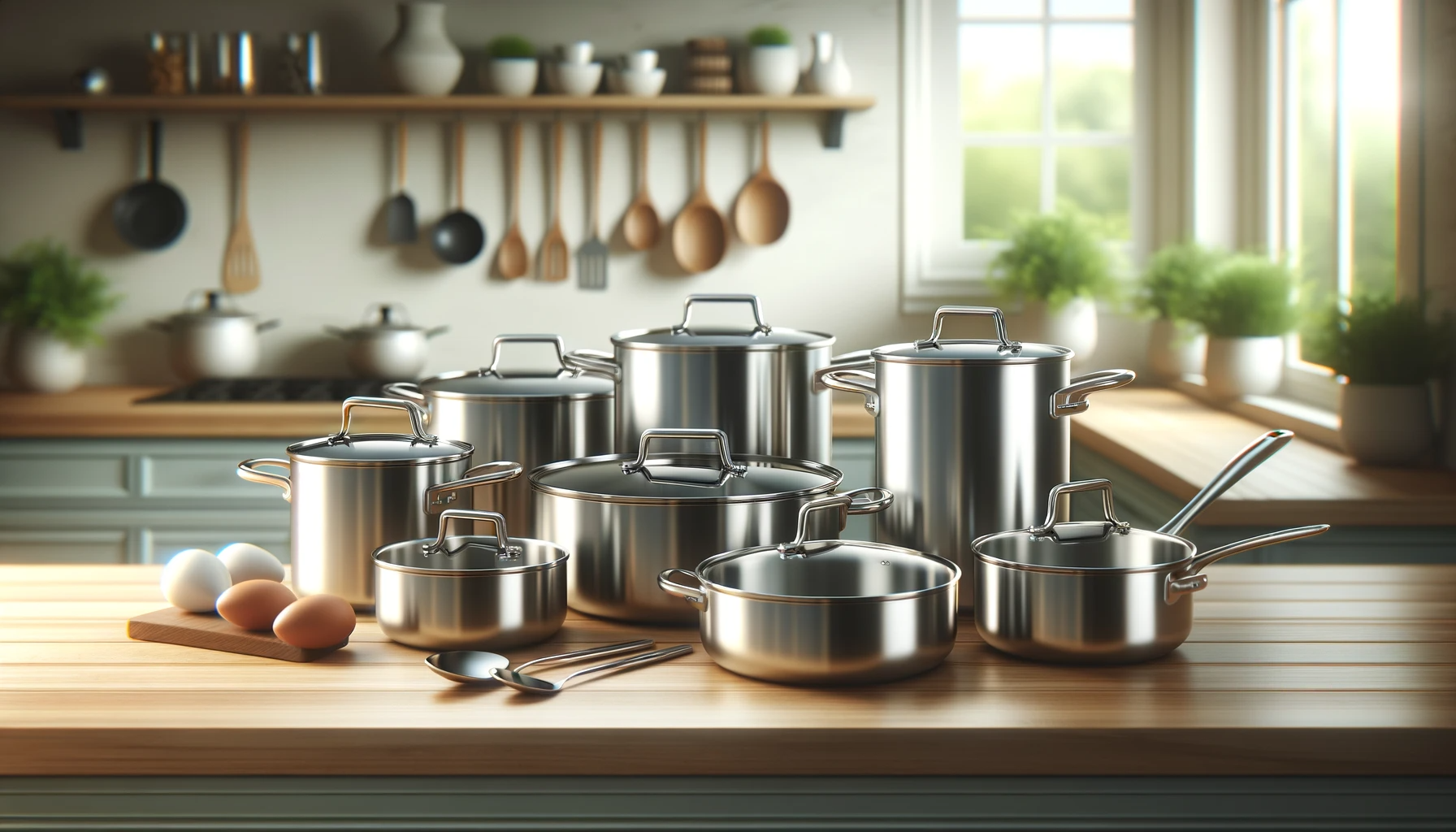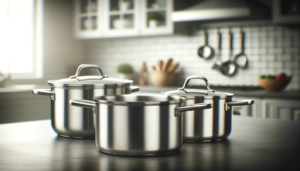Is your stainless steel cookware secretly leaching toxic metals into your food? Understanding the safety differences between grades and quality levels is key.
Not all stainless steel cookware provides equal protection against metal leaching.
Carefully selecting the optimal grade and manufacturer is essential to minimize corrosion and toxicity risks when cooking.
Let’s dive into the factors that determine how safe your stainless cookware truly is for daily cooking demands…
Is All Stainless Steel Cookware Non Toxic?
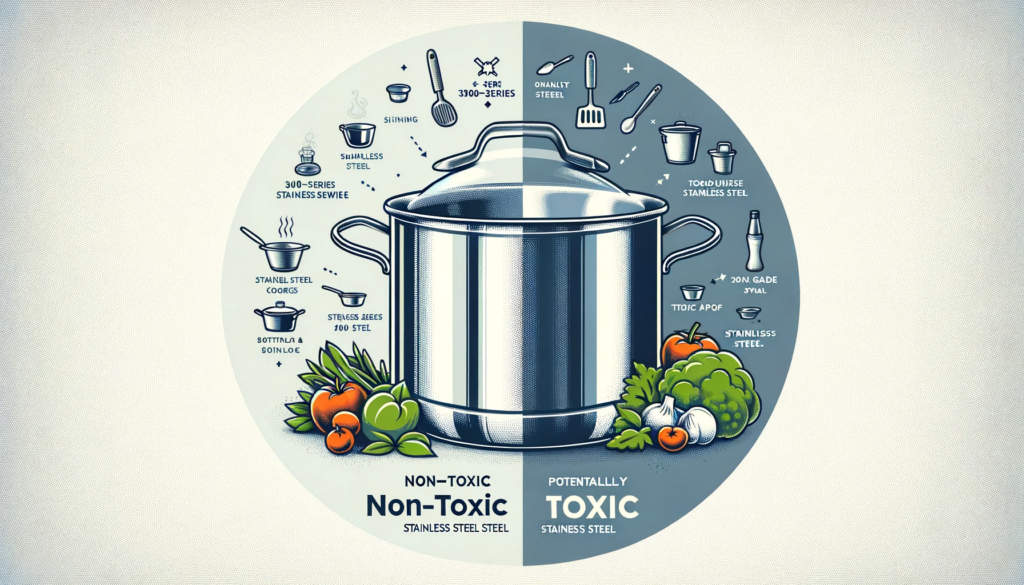
The short answer is no – not all stainless steel cookware should be considered completely non-toxic.
Lower grades of stainless steel and poorer manufacturing quality increase the risk of trace metal leaching during cooking.
However, high-quality 300 series stainless steel cookware made to exacting food-grade standards can be safely assumed to be highly non-toxic for regular cooking demands.
As we explore in more detail below, choosing wisely when purchasing stainless steel cookware is key for assuring safety and non-toxicity over years of use.
What is Stainless Steel Cookware?
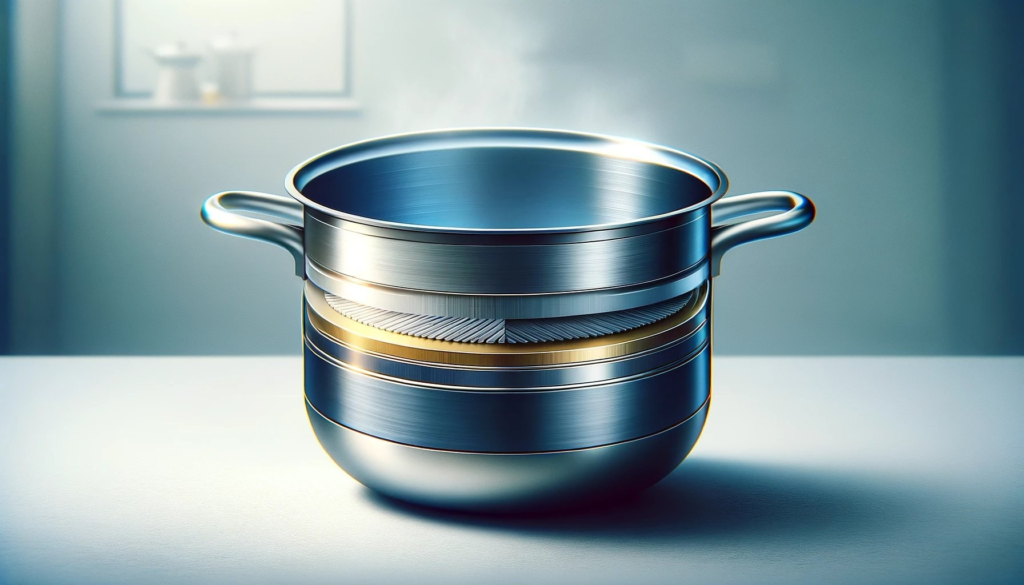
Stainless steel is a popular metal alloy that is used to make a variety of products, including cookware.
It is steel that contains chromium and nickel as its main added alloys.
The chromium helps create an invisible passive layer of chromium oxide on the steel, which acts as a barrier to corrosion and rusting.
This makes stainless steel more stain and corrosion resistant compared to regular carbon steel.
Additionally, nickel improves the formability and durability of stainless steel cookware.
Due to its anti-corrosive properties combined with durability, stainless steel has become a very common metal used to manufacture pots, pans and other types of cookware.
There are numerous grades and surface finishes of stainless steel that may be utilized to make a pan or pot.
Some of the most common varieties used in cookware include 304, 316 and 430 stainless steel.
The two digit number refers to the specific alloy composition of that particular stainless steel.
Higher numbers generally indicate more corrosion resistance, with 316 being more resistant than 304.
The grade of the stainless steel used in cookware impacts properties like durability and the leaching of metals.
When shopping for stainless steel cookware, consumers will notice various numerical grades listed that tell you the specific alloy blend.
The grade gives insight into qualities like corrosion resistance.
Some additional details on common grades are:
304 Stainless Steel – This is a basic and popular grade often used in cookware.
It contains chromium, nickel and manganese as primary alloys.
It offers decent corrosion resistance but lower nickel content makes it less durable for heavy usage than 316 stainless.
316 Stainless Steel – 316 stainless includes more nickel than 304, along with additions like molybdenum.
This boosts the corrosion resistance significantly and also improves toughness.
It provides better protection when cooking highly acidic or salty foods that can accelerate corrosion.
430 Stainless Steel – 430 grade is on the low end of stainless alloys.
It still contains chromium but has little to no nickel content.
This leads to lower corrosion resistance compared to 300 series stainless steel.
However, it provides an affordable option for less demanding cooking requirements.
Is All Stainless Steel Created Equal for Cookware?
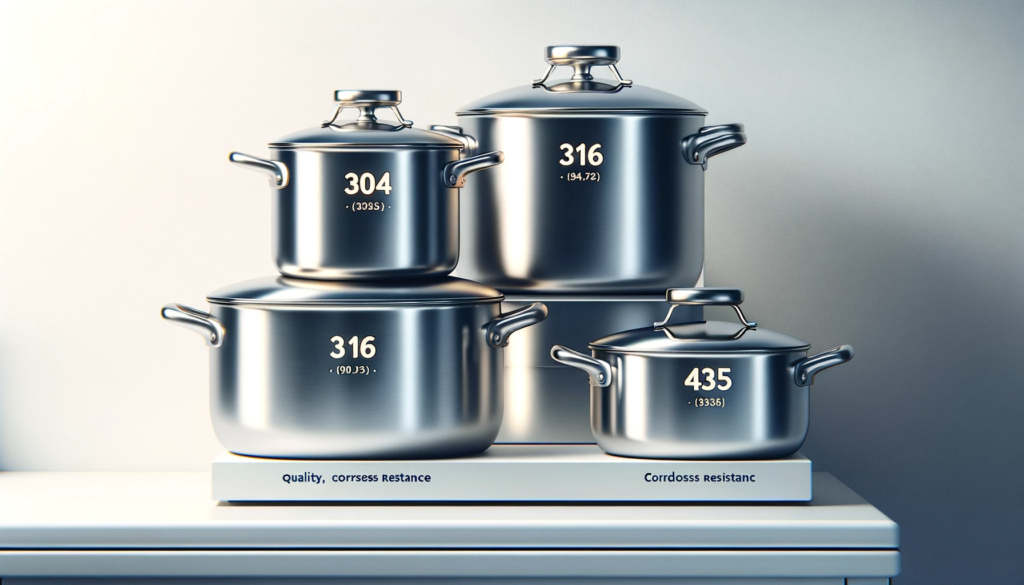
While stainless steel is valued for its anti-corrosive properties, not all stainless steel cookware is created completely equal when it comes to features like durability and safety.
There can be considerable variability between grades and types of stainless steel, and how the cookware is actually manufactured also plays a significant role.
Some key factors that affect the quality and safety of stainless steel pots and pans include:
Grades Differ Greatly in Corrosion Resistance and Durability
The different numerical grades of stainless steel can have varying levels of corrosion resistance and durability, which impacts the lifespan of the cookware.
Higher grades like 316 generally offer substantially better corrosion resistance than lower grades like 430.
Nickel content also improves toughness and durability significantly.
So higher nickel 316 stainless will typically last noticeably longer than standard 304 stainless steel cookware when used regularly.
Higher grades also better resist deterioration from exposure to salt, acids and high heats.
Cooks serious about the longevity and performance of their stainless steel cookware over many years of steady kitchen use are wise to focus selection on 316 or 304 grade stainless whenever possible.
While less expensive, lower 400 series stainless simply does not have the resilience needed for lifelong cookware subject to heavy rotational use.
Food Grade vs Other Grades for Safety
When choosing stainless steel cookware, it is advisable to opt for a food grade variety of stainless steel.
Food grade means it is made from alloys deemed safe for direct food contact.
Other industrial grades of stainless steel may contain heavier metals or contaminants unsuitable for cooking.
Always check that the product specifies “food grade” or “food safe”.
The alloys used can impact safety, so verifying food grade stainless steel guarantees a blend with only non toxic metals intended for sustained direct food exposure during meal preparation.
Industrial stainless steel alloys allow more lax tolerances on potential metal contaminants not meant for repeated contact with edibles.
Key Concerns Around Toxicity
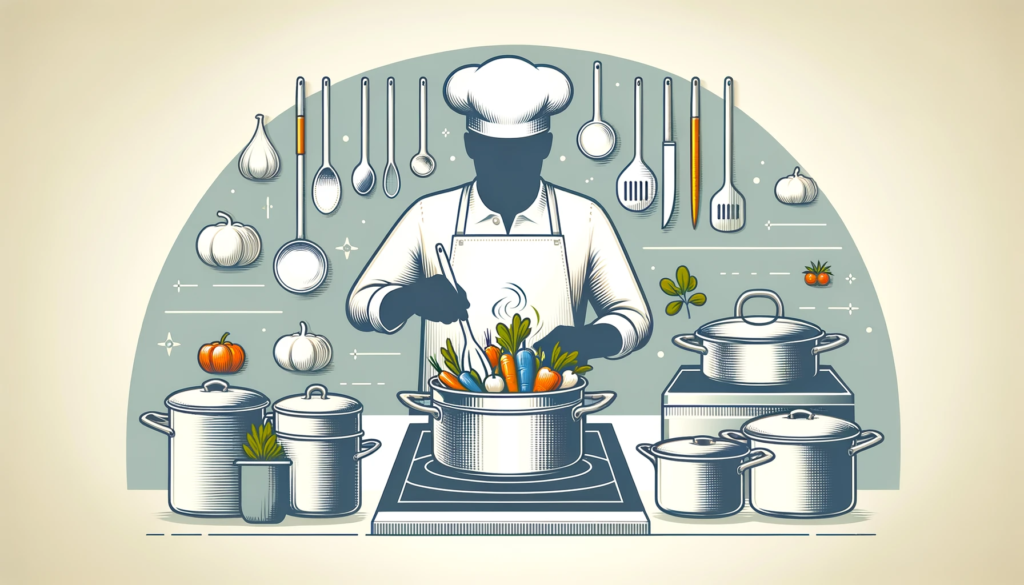
While food grade stainless steel is designed to be safe and non-toxic under most typical usage, there are some potential health concerns to be aware of when it comes to stainless steel cookware:
Nickel Leaching – Some Grades More Prone, Impacts Those with Nickel Sensitivity
One issue that sometimes crops up with stainless steel is the leaching or migration of nickel into acidic foods during the cooking process.
This depends greatly on the grade of stainless steel used, with some grades far more prone to allowing nickel to leach out under cooking demands.
Those with a nickel sensitivity or allergy need to pay special attention to the grade of stainless steel their cookware is made from.
300 series stainless steel has much more nickel alloyed than 400 series.
All stainless steel cookware releases tiny amounts of nickel into food over time, but lower grades with less inherent corrosion resistance tend to allow faster and more prolific accumulating nickel contamination.
For those receptive to nickel effects, this can mean 400 series stainless steel cookware leads to irritation and reactions much quicker, while 300 series delays onset substantially.
Checking for a grade like 304 or 316 stainless provides confidence in greatly reduced nickel leaching if avoiding nickel is a priority.
Chromium and Other Metals Leaching in Small Amounts into Food in Some Cases
In addition to nickel, small amounts of other metals like chromium can also leach out of stainless steel cookware into foods in some instances.
This tends to be negligible and well below safety limits set for human consumption.
But very acidic, salty or high heat cooking can increase the chances of leaching gradually occurring.
Prolonged and repeated aggressive cooking accelerates the leaching process over time.
Additionally, poor quality stainless steel is noticeably more likely to allow faster and higher levels of accumulated metal leaching under extreme cooking conditions.
Low grade stainless steel allows more corrosion that releases metal ions.
Ensuring cookware boasts at least 304 stainless steel provides much more corrosion resistance to curtail metal migration into food.
Quality of Production/Manufacturing Impacts Leaching
How the stainless steel cookware is actually manufactured also plays a significant role in its tendency to leach metals over frequent usage spanning months and years.
Lower quality manufacturing processes can result in subtle issues like small pinhole pits and gaps in the protective surface layer of the steel.
This then provides an avenue for metal ions to steadily migrate out into food with repeated exposure to heat, salt and acids.
High quality manufacturing controls however, lead to much tighter standards where imperfections and pinholes are minimized through more rigorous production benchmarking.
This in turn drastically limits the longterm metal leaching stainless steel cookware can potentially release.
Seeking out reputable brands who refuse to compromise on benchmarks for quality controls means obtaining resilient cookware that maintains its protective qualities years into regular rotation.
How to Choose Safe Stainless Steel Cookware

When selecting stainless steel pots, pans and other cookware, keep the following tips in mind to limit your toxicity exposure:
Opt for High Nickel-Resistance Grades like 304 and 316
Choosing options clearly labeled as 304 or 316 stainless will provide greatly enhanced nickel resistance compared to lower grade 400 series stainless steel cookware.
Grade 316 stainless steel is particularly optimal for the highest corrosion resistance which curtails nickel leaching.
With 300 grades, nickel release is hindered for decades versus 400 series stainless steel cookware that begins showing nickel contamination in acidic foods after just a year or two of typical kitchen use.
Ensure “Food-Grade” or “Food-Safe” Stainless Steel
Be absolutely certain to verify any stainless steel cookware is explicitly labeled as food-grade or food-safe to ensure suitable alloys for direct food contact have been used.
Manufacturers focused on food grade cookware utilize only alloys sourced from vendors vetting the metals to guarantee formulations approved for repeated food contact.
This weeds out industrial stainless steel variants with lax allowances for incidental heavy metals or unhealthy contaminants.
Reputable Brands More Likely to Limit Metal Leaching
When evaluating a manufacturer of stainless steel cookware, long respected brands with decades in business offer far greater assurances through their painstaking quality control standards to dramatically limit the risks of metal leaching during cooking.
Lesser known or generic brands without reputation to uphold often subtly cut corners during production that can seriously impact corrosion resistance over years of use.
Buying cookware from established brands like All-Clad with generations perfecting manufacturing rigor provides full confidence in obtaining resilient stainless steel cookware limiting metal migration for basically the lifespan of the owner.
Their reputations rely on this cookware workhorse reliability over many loyal customers.
Maintaining Your Stainless Steel Cookware
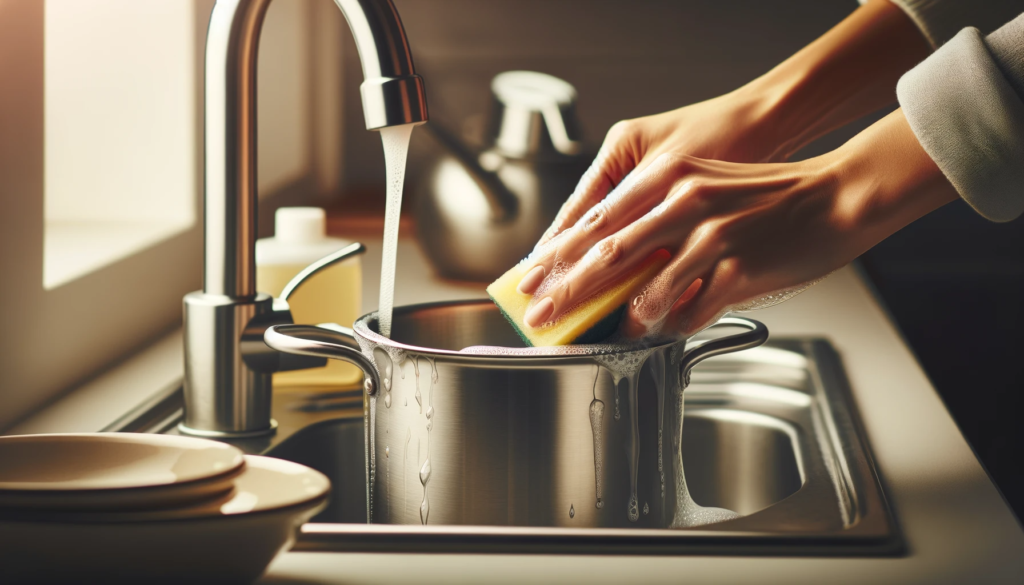
To limit metal leaching when cooking with stainless steel over many years of use, besides choosing high quality cookware there are some simple steps you can take with care that noticeably reduce contamination risks:
Proper Cleaning and Avoiding Damage Reduces Leaching Risk
Take great care not to scour or damage the protective surface layer inside stainless steel cookware during cleaning.
Use only non-abrasive soft scrub pads combined with standard liquid dish soap instead.
Scouring over time erodes the surfaces exposing micro gaps that later channel metal leaching.
This prevents openings through protective layers that could allow more metal migration to occur later on during cooking.
Additionally, taking care not to gouge cookware with utensils while cooking further ensures an intact barrier against leaching over many meals.
Scratches and pits concentrate corrosion attacking protective surface layers.
Signs of Wear and Tear Mean Time to Replace Cookware
Be sure to keep an attentive eye out for any signs of damage and wear to your stainless steel pots and pans during cleaning.
If the cooking surface eventually becomes excessively scratched or subtle pitting creeps in, it is certainly time to replace the well used cookware to reliably maintain safety.
Once wear and tear degrades the protective qualities of the steel, metals begin migrating faster into food.
Setting a conservative 10 year rotation for 300 series stainless steel cookware ensures you stay well within safe allowances for metal leaching over years of scratches and high temperature corrosion.
For 400 series stainless steel, more frequent replacement every 5 years hinders corrosion openings.
Conclusion
When expertly produced according to exacting benchmarks using appropriate food grade materials, stainless steel cookware is widely regarded as impressively safe and non-toxic for everyday cooking demands.
But there are some incremental risks to weigh in certain contexts.
Lower grade 400 series stainless steel is noticeably more prone to corrosion and subsequent metal leaching over months and years of use.
Extreme cooking conditions involving high heat, salt and acids can also work to hasten the gradual release of metals over time.
Choosing high quality 300 grade stainless steel cookware then properly caring for it reliably minimizes any potential toxicity issues for decades of reliable use.
Simply being aware of the various subtle factors allowing metal leaching with stainless steel allows consumers to make fully educated selections when investing in lifelong cookware.
